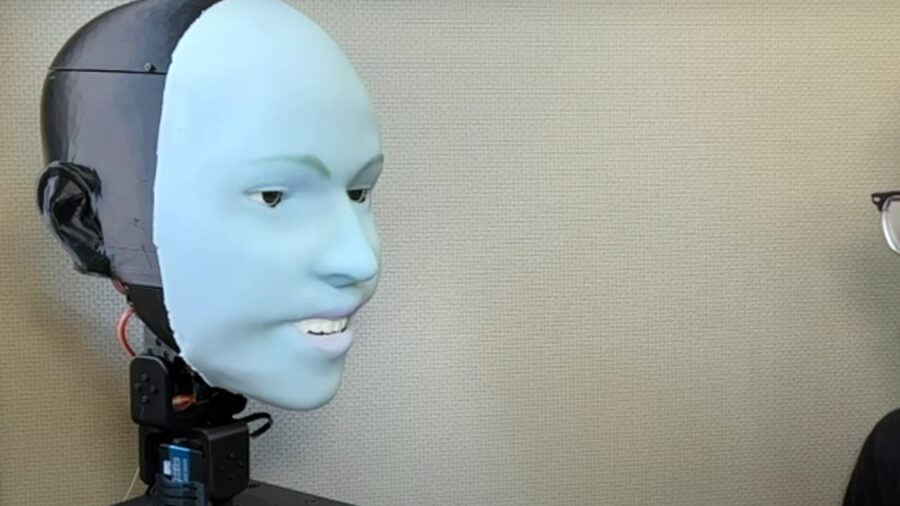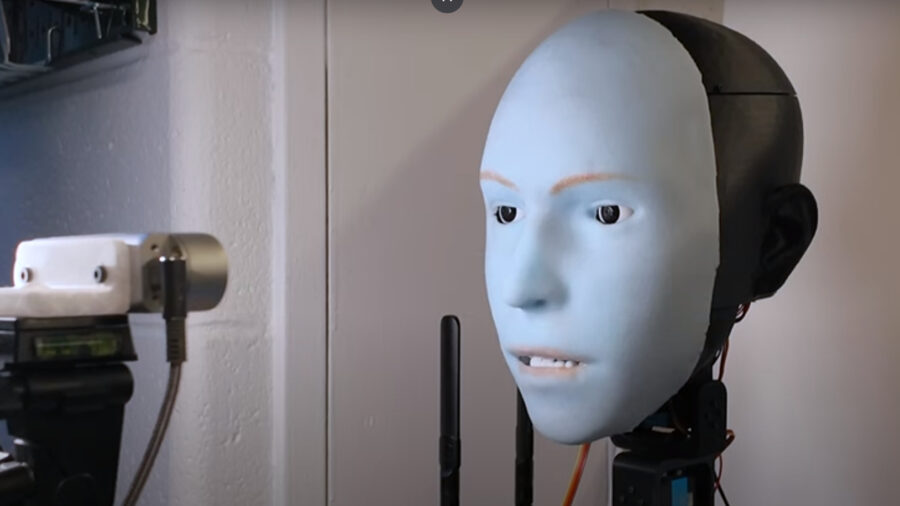Emo Is The New Robot Learning How To Smile With Humans

Consider it a significant leap in closing the communicative gap between humans and robots (who will soon probably replace humans anyway): engineers at Colombia University have debuted a silicon-skinned robotic face, otherwise known as Emo the robot. No, this is not a Pixar movie; instead, this robo-face can make eye contact and preemptively mirror human smiles. It’s a groundbreaking innovation led by Hod Lipson of the Creative Machines Lab, marking a significant advancement in robotic empathy and nonverbal interaction.
Emo’s design features 26 actuators lying underneath its silicone facade, which facilitates a wide array of facial expressions.
This new benchmark for the future of human-robot relationships was detailed in a study entitled Human-Robot Facial Co-expression, evidencing the cumulative work of five years of meticulous research and development. The R&D paid off: Emo, the robot, can anticipate and replicate a human’s smile nearly 840 milliseconds before the actual smile occurs (creepy).
The ability dramatically enhances the realism of robo-initiated interactions; moreover, it creates an appreciatively profound sense of trust and engagement between humans and their mechanical counterparts (counterparts, for now…if this doesn’t turn into the sci-fi movie it seems fated to, at which point the more appropriate term will be overlords).
Either way, even if their work eventuates a Terminator-style apocalypse, the robotics teams from Colombia and Duke Universities who collaborated on the project are nothing if not talented. Their sophisticated design is the secret behind Emo, the robot’s expressive and oddly relatable prowess. Emo’s design features 26 actuators lying underneath its silicone facade, which facilitates a wide array of facial expressions.
“This revolution in Human-Robot Interaction (HRI) paves the way for more authentic and meaningful interactions, where robots can understand and respond to human emotions in real-time.”
Yuhang Hu, Colombia Engineering
When combined with the ultra-high-resolution cameras embedded inside its pupils, Emo can hold eye contact—a crucial aspect of nonverbal communication, most of human communication, after all. With Emo able to maintain eye contact, the connection felt by its human interlocutors is all the more deeply registered.

AI also plays a very active and functional role in Emo the robot’s predictive abilities—two innovative AI models, in fact. Tasked with predicting human facial expressions by comprehending tiny changes in facial movements, the first model comprises the “action” of the “action/reaction” binary. The second model, then, enables the generation of motor commands necessary for Emo to convey corresponding facial expressions.
With this duel-model approach, Emo can do much more than merely mimic expressions in real time—it can anticipate them. All of these elements engender seamless and intuitive interactions that mirror human-to-human exchanges.
Yuhang Hu was the study’s lead author and a Ph.D. student at Columbia Engineering who underscored the revolutionary potential of actually accurately predicting human facial expressions in robots. “This revolution in Human-Robot Interaction (HRI),” Hu expressed, “paves the way for more authentic and meaningful interactions, where robots can understand and respond to human emotions in real-time.”
Emo, the robot, can anticipate and replicate a human’s smile nearly 840 milliseconds before the actual smile occurs (creepy).
Once Emo the robot begins embracing verbal communication abilities by incorporating large language models (like ChatGPT) into its toolbox—the implications for personal and educational assistants are boundless and obvious. Hod Lipson, the project’s visionary leader, was quick to point out, however, that enormous responsibility and ethical judgment must be involved in the proceeding stages.
That said, developing a robot that can ably mimic and understand human expressions and emotions heralds a new, exciting era.
Source: Colombia Engineering












